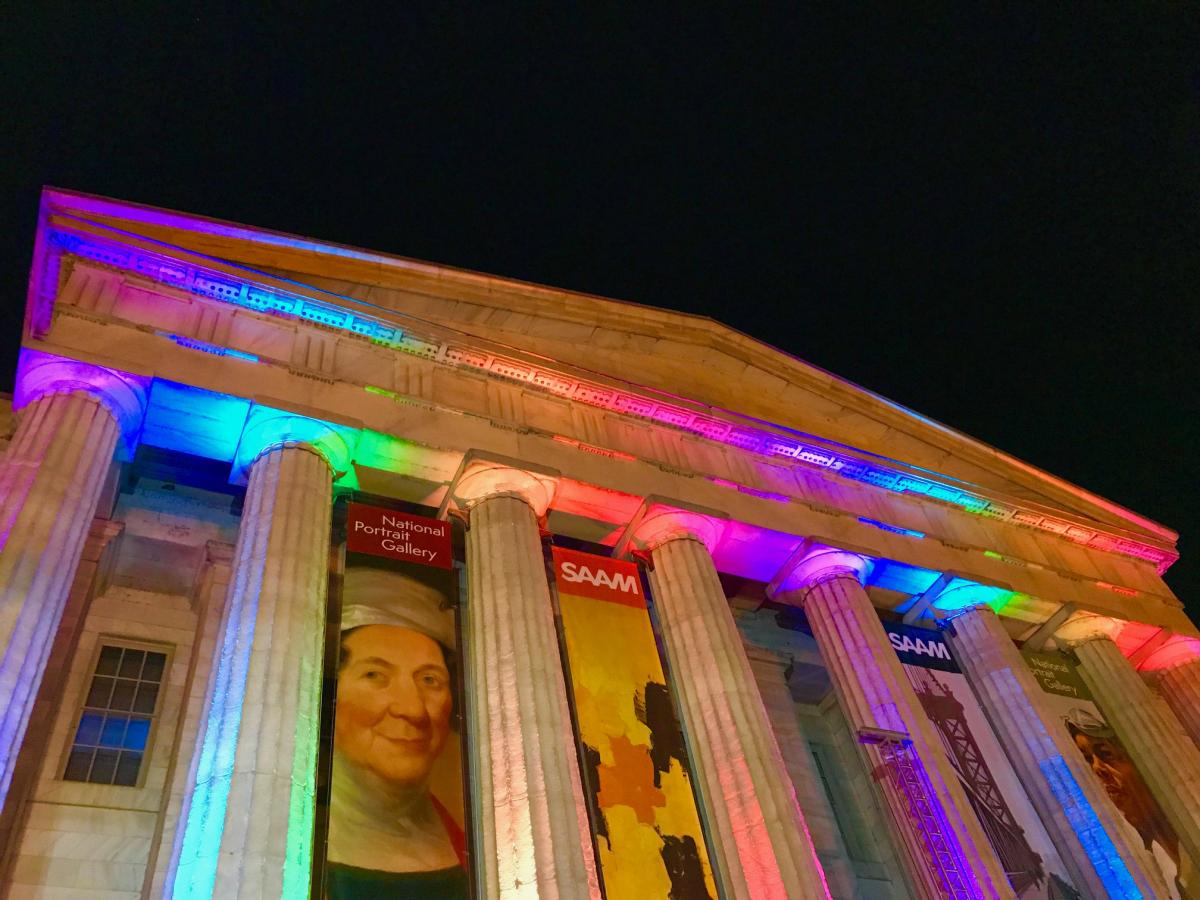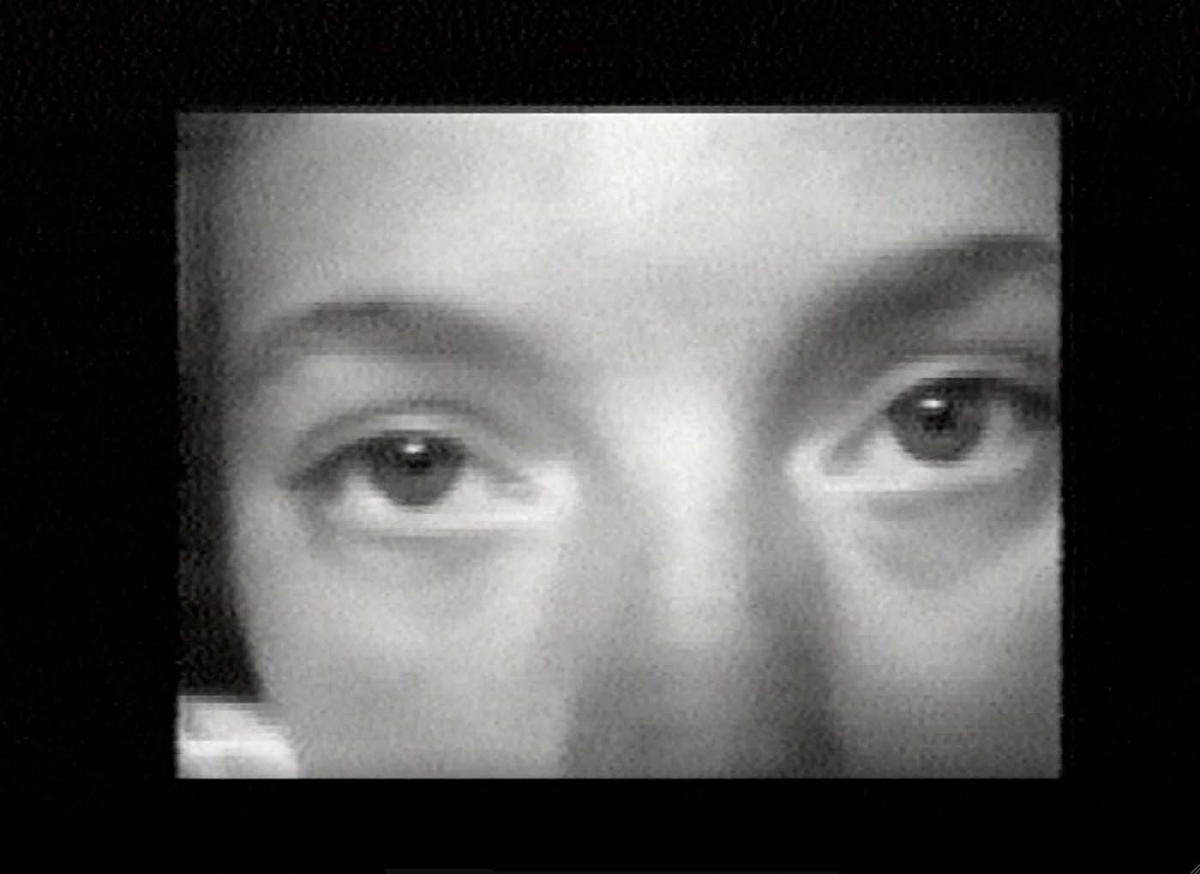
On Sunday June 9, SAAM will present its first ever pop-up time-based media exhibition and its first significant programming timed to DC Pride. As the day approaches, I wanted to share the thinking behind it, what we have in the works, and why I think you should see it for yourself!
As I noted in Beyond Black Boxes and Gender Barriers: A Year of Time-Based Media at SAAM, when I arrived as SAAM’s curator of time-based media, I was encouraged to think about how we could showcase this work while the gallery usually dedicated to media art was otherwise occupied. Looking at the calendar, it struck me that a day-long activation of SAAM’s spaces with LGBTQ+ inspired art could creatively complement the exuberance of the Capital Pride Festival, which takes place annually on Pennsylvania Avenue just blocks from SAAM's main building. It could also provide a platform for showcasing live performance art, a significant genre in American art not previously featured at SAAM exactly because it resists long-term exhibition frameworks. Zoom ahead, and now, in partnership with Capital Pride Alliance, we are excited to welcome Festival-goers (and everyone else) to Pride @ SAAM.
So, why designate Pride @ SAAM as a pop-up exhibition and not just a very busy day of programs? First and foremost is to underscore that the video screenings, performance art and computer games being brought together are all time-based artworks of the kind we might collect and show, at another time, in another format. As in a traditional gallery context, we curated a Pride presentation that would bring leading voices in American art to SAAM audiences. Additionally, framing this grouping as an exhibition hopefully encourages visitors to draw connections between artworks experienced during the course of the day as they would with paintings hung side-by-side in a room. In a gallery, we often ask how artworks sharing space relate to one another, and, when considered together, uniquely and creatively engage a topic. The works sharing the Pride @ SAAM schedule offer the same opportunity for layered insight. Individually powerful, together, they highlight various ways LGBTQ+-identifying artists navigate a world that insists their personal lives—and even ability to live safely—be up for public debate.
For this one day, SAAM's MacMillan Education Center will be transformed into the “Feminist Pride Media Art Gallery” with screenings of works about self-discovery from SAAM’s collection by Sadie Benning, by video game designer and author Anna Anthropy; lesbian film icon Barbara Hammer; and MacArthur “genius” Award-winning performance and video artist Wu Tsang. The centerpiece of programming will be the East Coast debut of Brendan Fernandes's Free Fall 49 (2017), a dance-based installation responding to the Pulse Nightclub shooting in Orlando. SAAM’s beautiful Kogod Courtyard will be an ideal setting for this piece. (This is also Fernandes’s DC debut, hot off recent performances in the rotunda of New York’s Guggenheim Museum and within his monumental sculptural installation featured in the 2019 Whitney Biennial). This iteration of Free Fall 49 includes special guest DJ Lauren Flax, an internationally touring musical artist in her own right, and DC-area performance artists and dancers Ronya-Lee Anderson, Holly Bass, Nisani Lopez, Rachel A. Luebbert, Debbie Z. Maciel, Gabriel Mata, Tariq O’Meally, and Angel Robertson.
Fernandes’s performance considers queer dance floors as sites of community, joy, resilience, but also danger. Benning and Tsang rethink how we communicate internal experiences to others, while defying linguistic categories that limit gender and sexual expressions. Anthropy and Hammer, for their part, imagine worlds defined by and for queer relations, without apology.
Finally, as with gallery-based exhibitions, this special presentation is amplified through related programs that link to our collections and extended communities. From noon to 3 pm, SAAM curators and fellows will lead “pop-up” conversations in front of individual artworks by Carlos Almaraz, Paul Cadmus, and Mickalene Thomas, discussed trough a queer lens. And from 2 to 7 pm, our partners from American University’s Humanities Truck will gather and share local LGBTQ+ histories via their exhibition-space-on-wheels, just outside our F Street entrance.
We hope you will join us for this experimental pop-up exhibition, both because we want you to experience these artists, thinkers and topics, and because we would love to hear how this model of engagement works for you. See you there!
Share your experience (and follow along) on social media with #PRIDEatSAAM.
# # #
Pride @ SAAM is presented by the Smithsonian American Art Museum, Smithsonian Pride Alliance, and the Capital Pride Alliance, and supported by the Smithsonian Year of Music and Because of Her Story, the Smithsonian American Women's History Initiative. The Initiative is inclusive, highlighting the stories of those who identify as women and those who were designated female but self-identify differently.






















